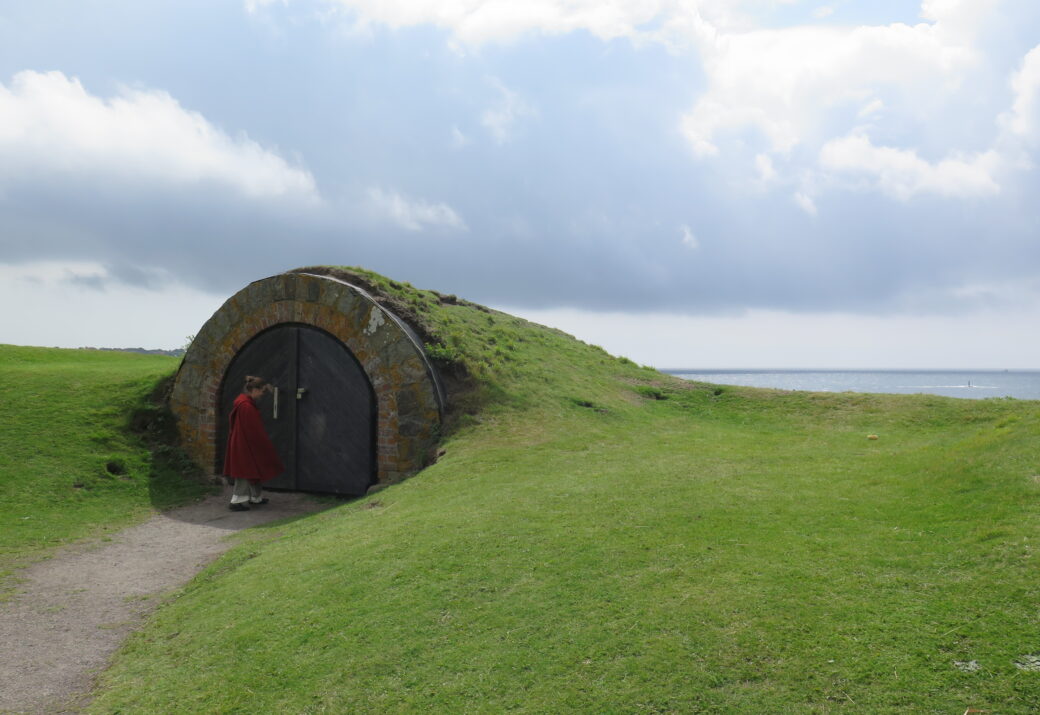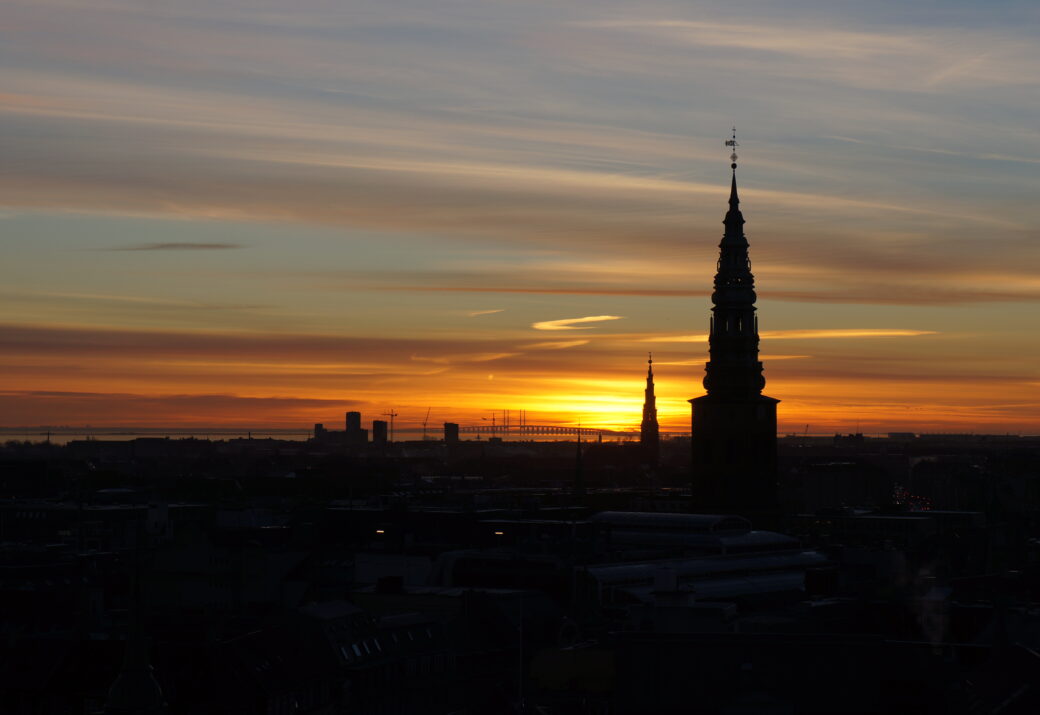This website uses cookies so that we can provide you with the best user experience possible. Cookie information is stored in your browser and performs functions such as recognising you when you return to our website and helping our team to understand which sections of the website you find most interesting and useful.
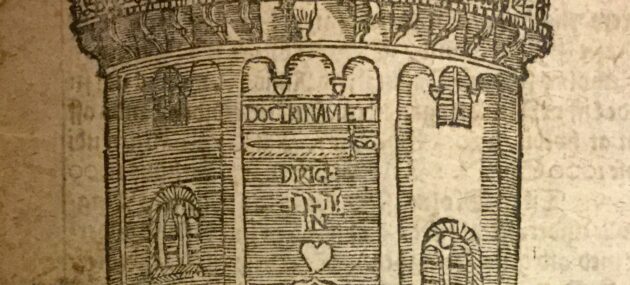
An Imposing Plan
The Round Tower is so deeply rooted in the soil of Copenhagen that one might think it has always been there, standing in the same exact shape as now. However, one should not confuse immovability with changelessness since changes indeed have been made, both on and around the tower, in the time after it was finished in 1642.
The biggest changes have occurred around the Round Tower. Thus, the year after the inauguration of the Trinity Church, which is built alongside the tower, the surrounding area of the church started being used as cemetery. A wall encircled the cemetery, the gates of which were facing the street of Købmagergade and the street of Pilestræde, which was called Springgade at that time. Today, most of the cemetery is replaced by a square that was built in the late 1920s.
A Close Observer
The changes made on the actual tower are less extensive, but they do exist. A look at old drawings, for instance, gives us reason to believe that the tower initially had round arched window openings, which were later altered to their current pointed arch shape. Similarly, the windows of the Library Hall were once rectangular, a shape they might have had to begin with and at least obtained after the Copenhagen fire of 1728.
“By positioning them in this way, exactly 32 console stones formed part of the construction, which was no coincidence. A compass was also divided into 32 points at that time, which is why the entire platform thus resembled one large compass rose”
One also needs to be a close observer of detail when it comes to another early alteration of the Round Tower’s appearance. For until the fire of 1728, the number of console stones, which support the platform at the top of the tower, was different from today. This too, can be seen on the drawings that exist of the Round Tower from the 17th century. The current 24 console stones are placed in such a way that each stone is located above the gap that exists between all the arches in the frieze that extends to the top end of the wall. In the past, however, it looks like the console stones were placed directly above the arches and also above the flat bands or lesenes, which extend throughout the whole length of the tower.
Like a Compass
By positioning them in this way, exactly 32 console stones formed part of the construction, which was no coincidence. A compass was also divided into 32 points at that time, which is why the entire platform thus resembled one large compass rose. In all probability, the initial arrangement of the latticework underlined this structure as well. It may seem appropriate to locate an observatory, which has to take the four corners of the world into account, on a compass rose, but the compass structure was actually used as architectural template in yet another one of Christian IV’s building works.
According to Jens Lauridsen Wolf (1583-1660), who in 1654 published the book Encomion regni Daniæ, and had studied under Christen Longomontanus (1562-1647), who designed the first observatory in the Round Tower, the compass structure also appeared in Christian IV’s round church St. Anna Rotunda in Copenhagen, which was under construction at the time. The church was “round at the bottom like a compass with all its points and above each point, a masonry vault is built on the ground”.
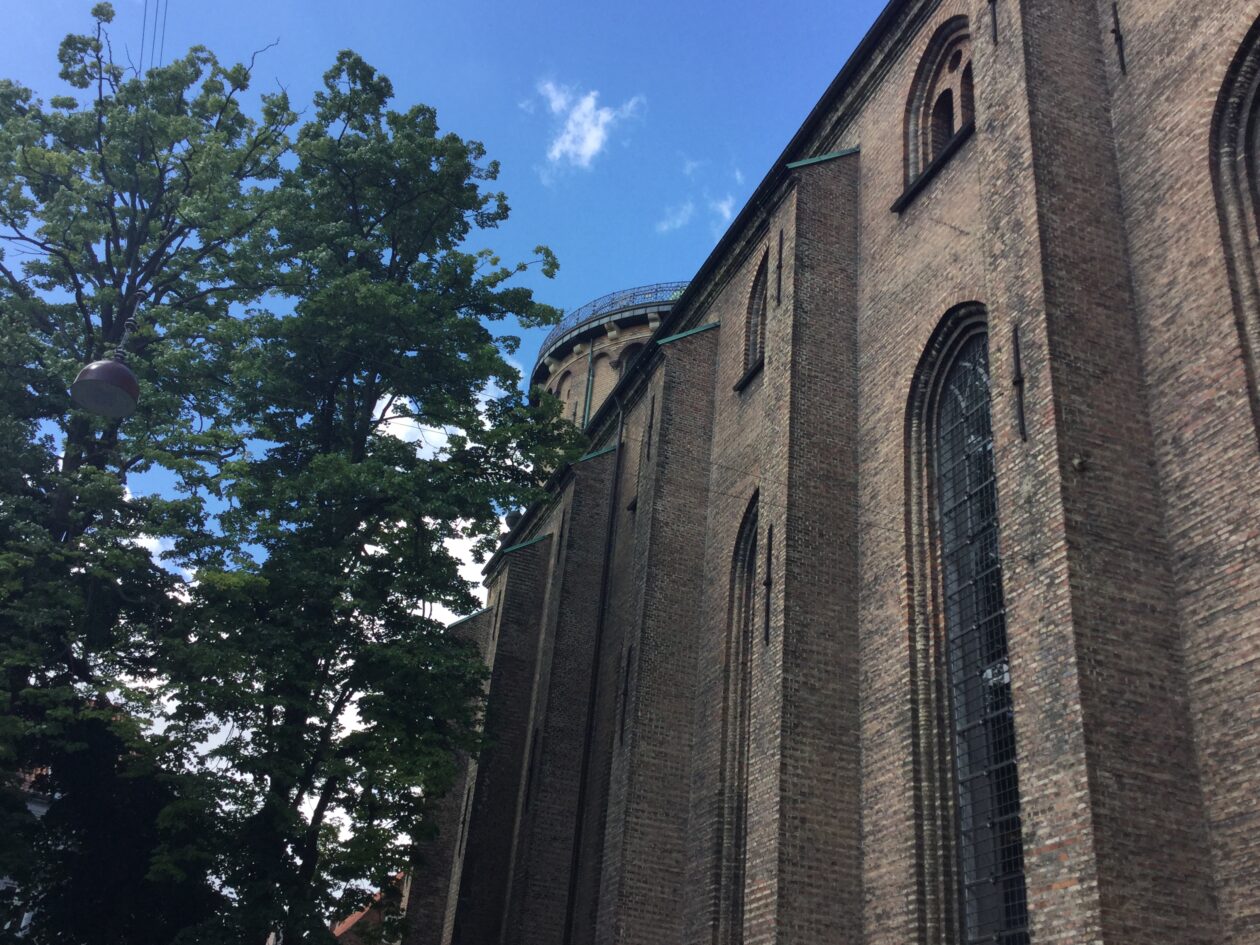
Recycling I
St. Anna Rotunda was never completed, and a few years later the unfinished church was demolished. At the Round Tower the ingenious structure based on the compass disappeared as well. The fire in 1728 severely damaged the Observatory and the top floor of the tower, which, at that time, housed the chambers of the astronomers. Since the consoles were placed right between the two localities, some of them had to be replaced. The least damaged consoles were most likely recycled, or parts of them were. By the same token, the number of consoles was reduced to the current one.
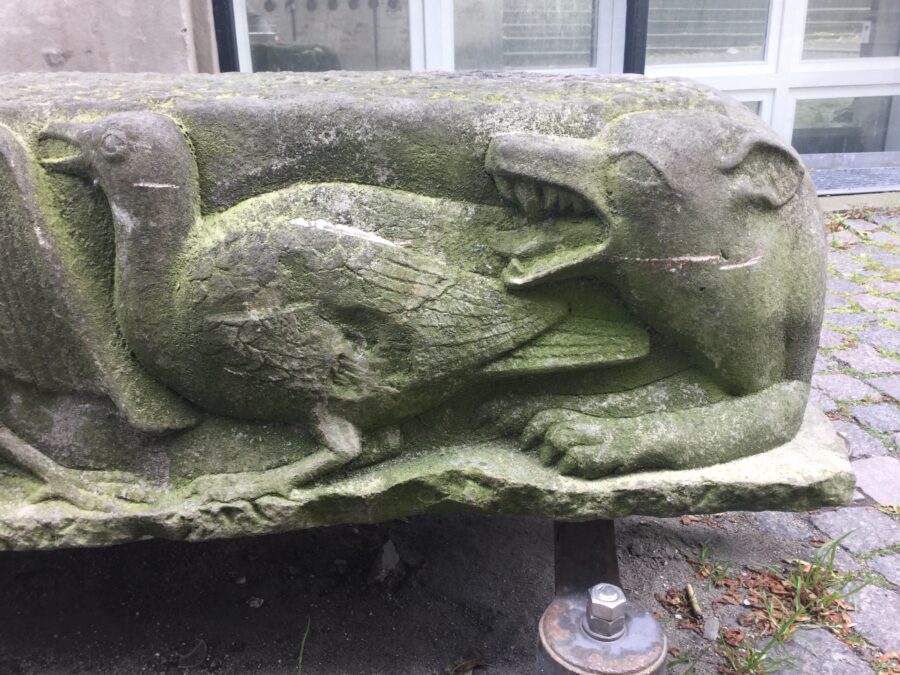
However, this does not mean that it is still the same consoles that are sitting up there. The vast majority, if not all, have been replaced in the course of time. Thus, one cannot exclude the possibility that it is a renewal of the old console stones that the naval officer Peter Schiønning (1732-1813) is observing on his 46th birthday on August 13, 1778. That same day, he wrote in his diary that he, “was at the top of the Round Tower with my wife in the evening and saw the new devices and everything new that had been built, the stone pillars, which were going to be placed up there and hoisted via the hollow core in the middle of the tower”. Probably the stone pillars that the naval officer refers to should, however, rather be identified as two “marble-pillars rising six feet above ground” on which a telescope was resting in the new observatory, which was being arranged at the top of the tower in those years.
Recycling II
The most recent replacement of the consoles took place in the 1980s, when the church square south of the Trinity Church underwent renovations as well. Old and not so old consoles were gathered from the State Building Service’s lapidarium, or stone collection, and placed on the square. Here, 19 former consoles have been recycled and become benches, while two have become vertically positioned steles close to the entrances of the original cemetery.
The function of the consoles as part of a compass structure has vanished long ago, but in return, they have received another greeting along the way. The sculptor Ejgil Westergaard (1928-2015), who conveniently enough had experience with artistically made sepulchral monuments among other things, carved images of animals into some of the consoles. As with the old drawings, one must be a close observer here too, for then it is possible to discover frogs, cats, rats, birds and other kinds of animals hiding in the surface. All the animals of the cemetery back in place again.
